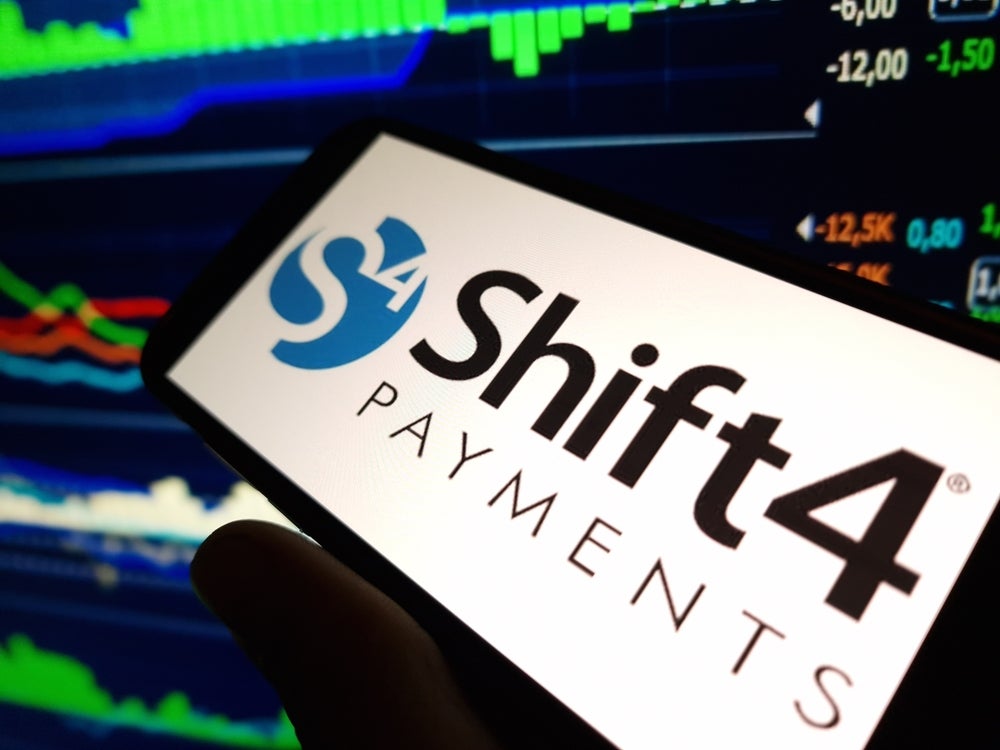not escaped the trend of consolidation that has happened in other
sectors, and the imminent arrival of the Single Euro Payment Area
brings new opportunities for the major players in this field.
CI reports.
The transformation that is taking place across Europe’s merchant
acquiring industry mirrors a similar shift that has occurred in
processing, with acquisitions and mergers predominantly being the
main organ of volume growth. However, merchant acquirers have an
altogether different set of considerations to factor into their
business models, particularly as SEPA approaches. Cross-border
acquiring has grown significantly over the past few years, driven
by the boom in e-commerce and the needs of multinational merchant
categories, such as airlines and internet retailers, and as volumes
grow, so does the need to keep abreast of technology developments
such as contactless payment and the ability to settle card
transactions in foreign currencies.
It is widely expected that, as in the processing industry,
continuing consolidation will result in the emergence of a few
dominant players, as smaller players are forced out of the business
in many European markets. CI asked Roger Alexander, CEO of European
merchant acquirer Elavon Merchant Services (formerly euroConex),
and Francesco Burelli, principal consultant at financial services
consultancy Capco, for their views on the trend of consolidation,
and whether acquiring business models will increasingly be driven
by revenue-sharing agreements.
Forces behind consolidation
Alexander says that SEPA is the major factor driving consolidation
at the moment. “SEPA has had a lot to do with the way the industry
has developed and is developing in Europe at the moment,” he says.
“The business models have undoubtedly changed and there is a move
to a situation where the big players are going to get bigger, and
the smaller will get even smaller or disappear altogether. A lot of
that is down to the threat of SEPA rather than the reality of SEPA.
There are a number of ways for acquirers to grow – the first and
most obvious is through mergers and acquisitions. The second way is
through white labelling, and the white-label option may pull in the
revenue-sharing agreements, and there will be more of those in the
future.
“One of the things that we’ve noticed in the marketplace over the
last three to six months is that there’s less appetite for
organisations to sell portfolios, and there’s more appetite to
partner in some way, either through joint ventures or through a
white-label operation. Both of those lead to revenue-sharing
agreements. They may not become the norm but certainly we will see
a lot more going forward.
How well do you really know your competitors?
Access the most comprehensive Company Profiles on the market, powered by GlobalData. Save hours of research. Gain competitive edge.

Thank you!
Your download email will arrive shortly
Not ready to buy yet? Download a free sample
We are confident about the unique quality of our Company Profiles. However, we want you to make the most beneficial decision for your business, so we offer a free sample that you can download by submitting the below form
By GlobalData“We’re uniquely positioned because acquiring is our business, not
issuing, and we’re able to operate slightly differently to some of
our competitors. Elavon has grown through acquisition rather than
organically and if I talk about the UK and Ireland, our first
acquisition was the Bank of Ireland portfolio, and the second one
was the Alliance & Leicester portfolio in the UK. We have what
we call referral agreements with the Bank of Ireland and A&L.
so they’re prepared to put business our way because we don’t issue
cards and they don’t acquire transactions at the POS. As a
relatively young acquirer (seven years), we are already the
fourth-largest in Europe. That growth has come through portfolio
acquisition and going forward we will look to invest where it’s
appropriate and through acquisitions or joint ventures where
appropriate.”
Burelli says that regulation such as SEPA and the Payment Services
Directive has also had a major impact, along with the expansion of
US acquirers into Europe, and those factors are driving change in
acquiring business models. Increased regulation in most European
markets will put more pressure on acquirers to be cost-efficient
and have sufficient economies of scale to be profitable.
“Merchant acquiring is a changing landscape and there is increased
competition from banks, but there are differing scenes across
European markets and across different acquirers. There has also
been an expansion of US acquirers in Western Europe. This US
expansion has led to new practices being introduced in merchant
acquiring, which were unknown to continental European banks. As a
result of that, the situation has become more competitive. The
industry is now consolidating and is more mature and that means
that margins are getting thinner,” he says.
“SEPA raises a number of issues, such as unbundling and
transparency. The question is how many merchant acquirers are
equipped to deal with this. There will be aggressive consolidation
as it is such a volume-driven industry. Pan-European banks will
want to become independent acquirers and to break away from
domestic debit scheme consortiums.”
Debit and interchange
Within the eurozone, debit is by far the dominant payment method,
and there is also the fact that there still exist several domestic
debit schemes in Europe. According to Capco, these schemes, made up
of banking consortiums, are effectively monopolies in each country.
National interchange rates for cards in the international schemes
and the interchange rates for domestic debit schemes have made it
difficult for merchant acquirers to take advantage of centralised
acquiring. For merchants themselves, this reduces the advantages of
cross-border price negotiation tiered to volumes, as acquiring will
always be subject to domestic rules, centralised or not.
Alexander says that although debit transactions are growing,
acquirers should be careful not to focus all their efforts on
maximising profit from debit at the expense of other card types.
“Any merchant acquirer worth their salt will want to acquire any
transactions, whether debit or credit, whether it’s domestic debit
or card scheme debit, or any of the charge card organisations,” he
says. “What I will say is that the profit margins for debit
throughout Europe are not necessarily thinner than credit card
transactions. There are certainly pockets of countries and
businesses across Europe where the margins on credit cards are very
slim indeed. What we have to do is drive cost efficiencies across
organisations, understand the cost bases and accept that if we
don’t understand our costs and find out those efficiencies, then
our businesses are under threat. It’s a basic requirement to fully
understand the business in order to grow, so we can create systems
platforms through technology or operating environments so you’re
less dependent on the margins. That is the big challenge for us
all. It’s about ensuring you can run a balanced portfolio and drive
profit from that.”
Value-added services
Technology innovation and the increasingly cross-border nature of
the business provide other opportunities for acquirers. Alexander
says that value-added services at the POS are helping to diversify
revenue streams.
“At Elavon we have a couple of key value-added services, which are
dynamic currency conversion and tax-back,” Alexander says.
“Acquiring has been a utility business for some time now and you
can drive so much out of your cost base, but ultimately you need to
add value at the POS. A lot of services are in the domain of
independent sales organisations [ISOs] who operate in the market.
That is also a slight change in the business model from 15 years
ago, where ISOs were almost impossible to find. Now we have those
organisations coming in and working with merchant acquirers and
providing bundled services at the POS, such as mobile top-ups,
rewards, POS credit and so on.
“There are two different streams: merchant acquirers working with
third parties to create value-added services at the POS, and
merchant acquirers working independently to drive new applications
at POS. We’ll see more of these in the years to come and it’s also
a way of differentiating yourselves from the competition. Not by
having something different, but by being first to market with
something different, rather than being a fast follower. It’s
incumbent on Elavon to have that speed to market so we can
differentiate at the POS, and grab a good slice of the
market.”
However, Burelli says most merchant acquirers are not realising how
value-added services can create new opportunities, or are simply
too small to capitalise on this. “A multitude of services can go
through the POS, such as bill payments, but most acquirers have not
been quick enough to exploit new potential. Major acquirers can’t
get the economies of scale to provide these services as it is not
part of their typical business model,” he says.
The emergence of contactless payment in Europe is also raising the
question of whether merchant acquirers should make pricing
concessions to merchants in order to get them to sign up to the
technology, whereas in the US, the card schemes subsidised the cost
of upgrading merchant terminals. Alexander says that given that
Visa and MasterCard are pushing contactless so aggressively, they
should also dig a little deeper into their pockets to enable more
merchants to sign up.
“It’s necessary for Visa and MasterCard, if they want to move the
market, to be able to help the acquirers out because all of these
things cost us at the POS. You can only prove that there’s a value
proposition for all the players if you can create a pilot project
that works, so I think it’s in the interests of Visa and MasterCard
to support acquirers through resources, through technology, and
through financial support if that’s appropriate, as we start to get
involved in the use of this new technology,” Alexander says.
“The important thing to stress is that once those pilots have taken
place, there is no money from the associations – we have to stand
on our own two feet. We have to be aware of the business model and
the value proposition, and if we’re happy that value is given then
we should be able to sell that product to merchants. I still have
some reservations about contactless as a product, not as a
technology, because the technology works very well. It also works
very well in a closed environment such as the London underground or
similar transport systems. The worry to a number of us in the
industry is what that model looks like when you expand it into a
truly open environment. There is huge benefits for transport
agencies like Transport for London to move from cash, and they’re
prepared to create the infrastructure to make that work. But when
you push it out to a wider audience, that’s not necessarily the
case, and the value proposition changes.”
According to Burelli: “Merchants in Europe are eager to get this
technology, having seen the US experience, so there will not be the
same level of merchant lobbying [for lower pricing] as has happened
in the US. Also, in Europe, terminals are owned mostly by the banks
and are not the responsibility of the associations. However, the
business case for merchants themselves is dependent on the volume
of cards used.”
Interchange fee reductions
Merchant service charges are the primary source of income for
acquirers, and acquirers pass on part of this fee to issuing banks
as interchange. With European regulators keeping a close eye on the
interchange levels levied by Visa and MasterCard’s banks in Europe,
interchange fee reductions are viewed as a fact of life in the
merchant acquiring industry and this is set to remain the case for
the foreseeable future.
Alexander says that although interchange is a cost that is passed
on by acquirers to issuers, and is therefore not as much as a worry
for acquirers, interchange reductions are inevitable. “Regulators,
whether at a domestic level or a European level, are certainly
scrutinising interchange and the impact is very likely to be
reduced levels of interchange,” he says. “Interchange is our
biggest cost and as a cost, if that’s reduced, then to an acquirer
that just means our cost base has changed. A lot of acquirers now
do more and more deals and contracts based on taking interchange as
a transparent number or a set of numbers and adding a margin on top
of that, and that’s the way business is being transacted, certainly
for bigger merchants. Lower costs for merchants could spur
competition in the sector and that might be something that the
regulators are looking for. I’m not sure it will because the costs
are not going to change significantly – I don’t think we’re going
to see huge drops in interchange.”
As the first phase of SEPA implementation in 2008 approaches,
Alexander says, it represents an unrivalled opportunity for
Europe’s merchant acquirers to secure an increasingly important
stake in the payment chain. “SEPA to us is wonderful because it’s
made people think about the future and understand that if they want
to develop in an open market, then they have to invest. The option
is invest or divest,” he says. “We believe that means more and more
consolidation and we think we’re going to move in Europe over the
next three to five years to a model which looks much like the model
in the US. In the US, there’s about 90 percent of the industry
controlled by five players. In Europe it’s only currently around 22
or 23 percent of the industry controlled by the top five players.
We won’t get to the 90 percent level, but I can certainly see a
case over the next three years or so where at least 50 percent of
the market in Europe is dominated by five major players.”







